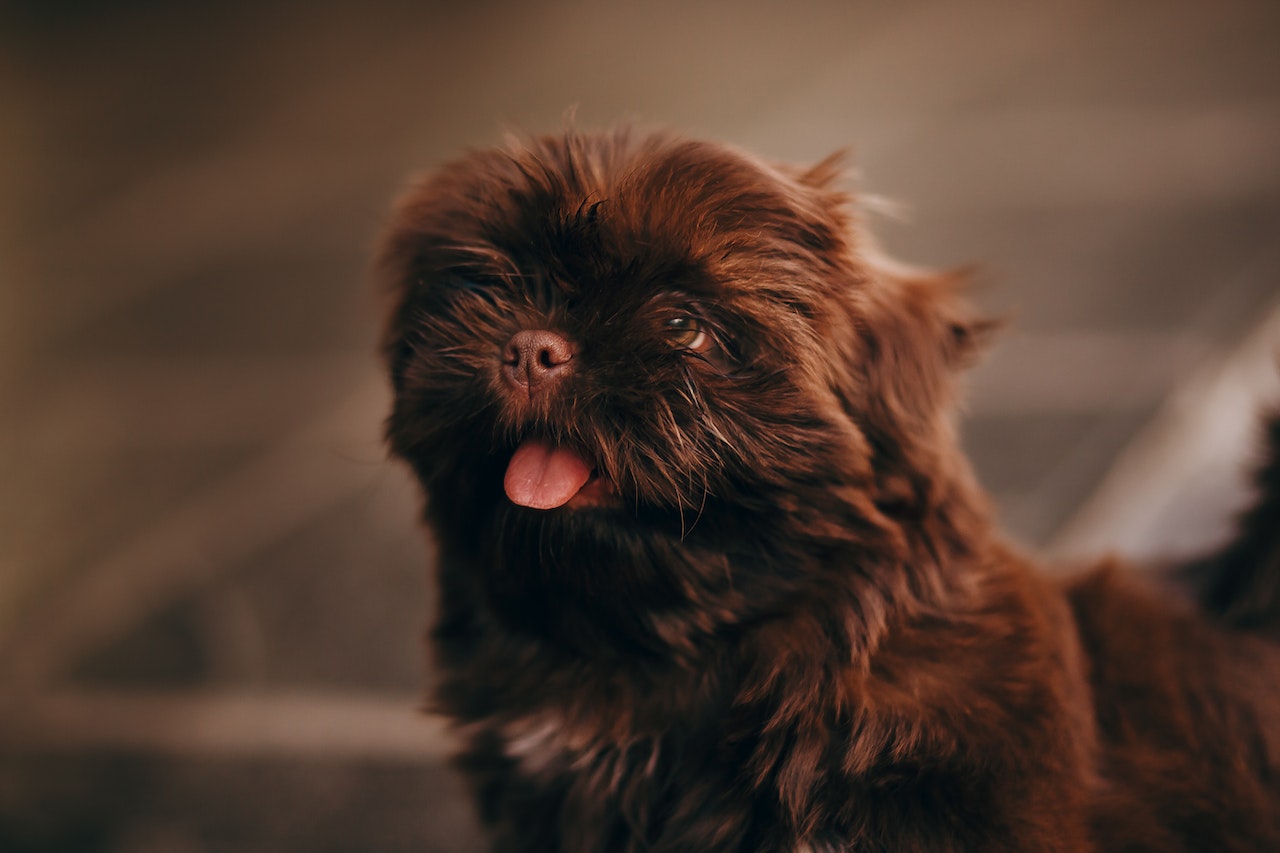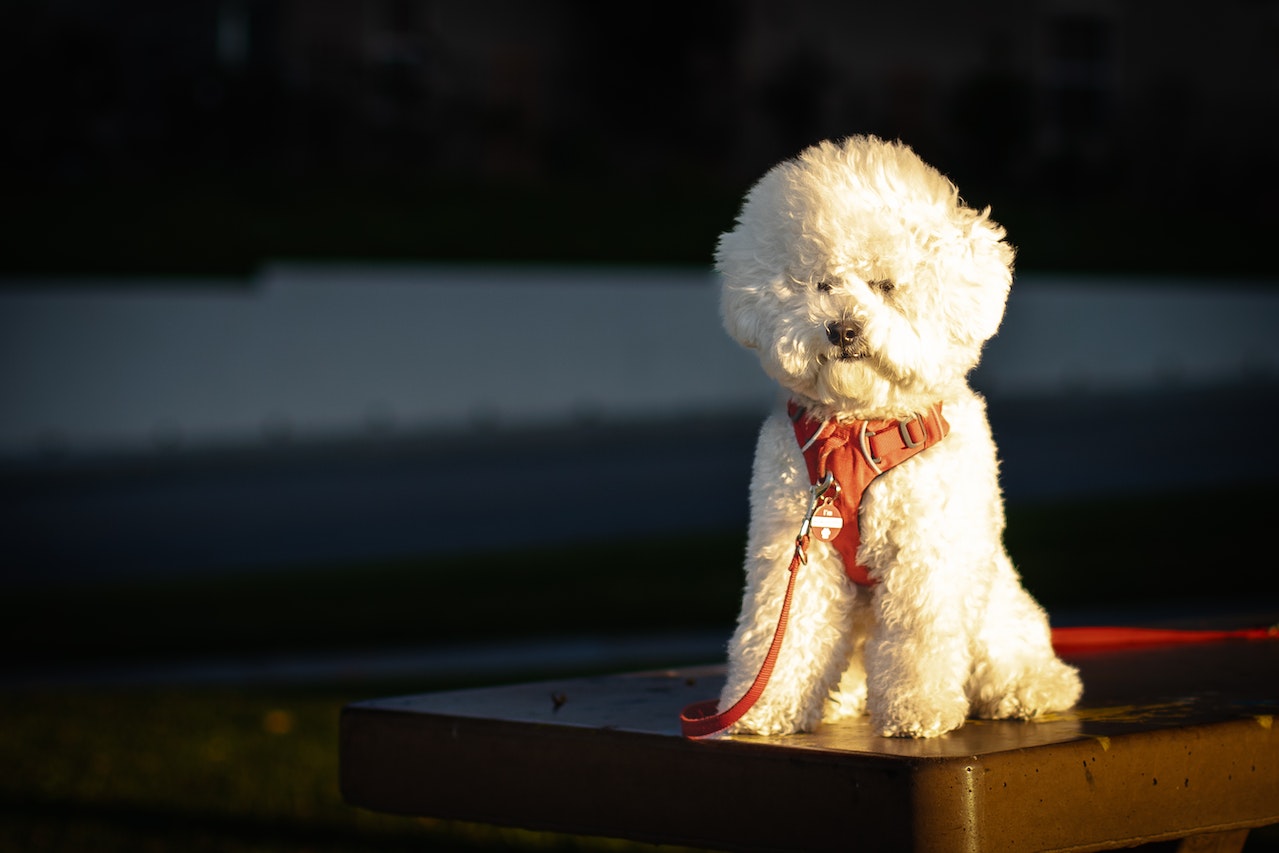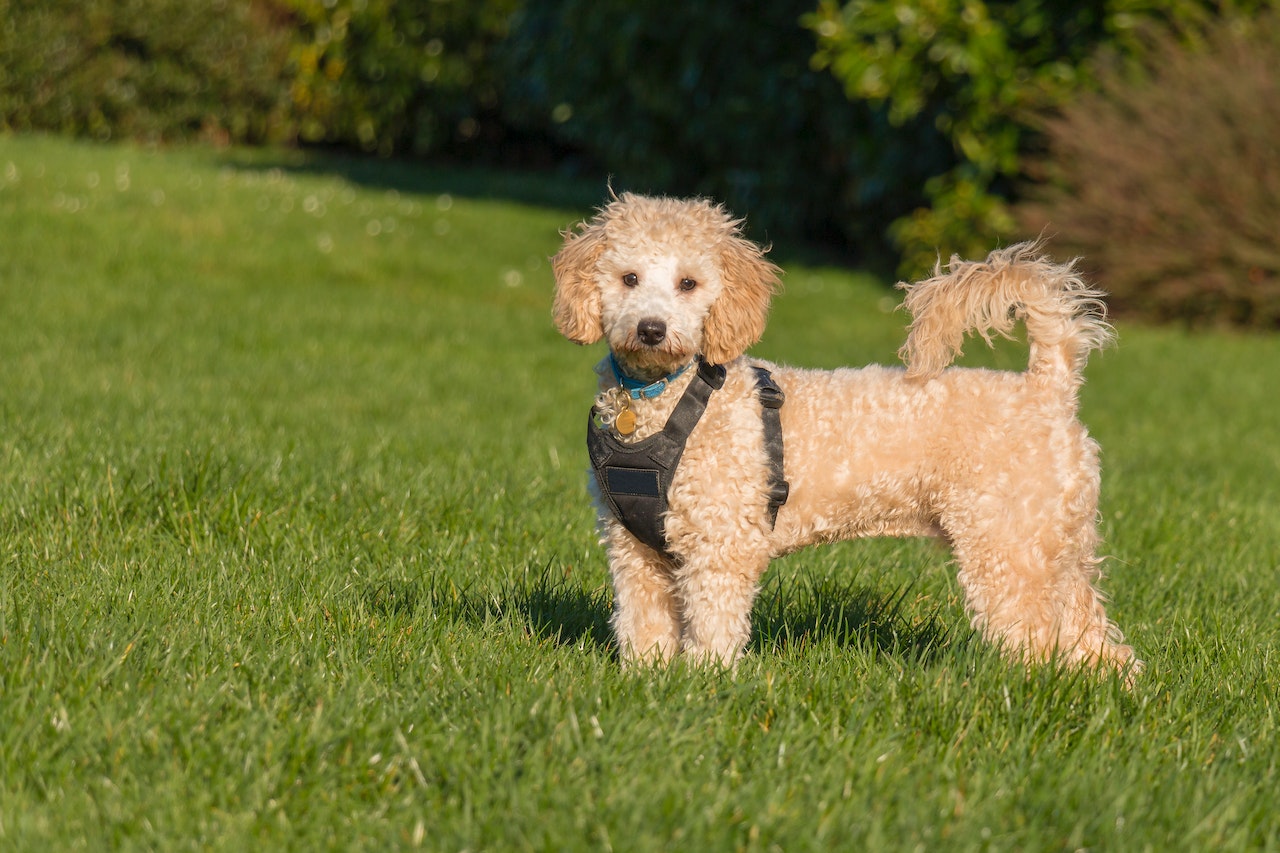Do you want to know Bichon Frise vs Maltipoo? The ever-popular Bichon Frise is the perfect companion dog since it is lovable, affectionate, and friendly. The Maltipoo, one of the latest designer dog breeds, is hot on its tail in terms of popularity. Both breeds are popular among dog owners because of their cute, friendly, and appealing personalities.
These pint-sized balls of amusement are comparable in attitude and appearance, making them ideal for apartment dwellers. Nonetheless, there are several slight distinctions in grooming, upkeep, and temperament.
This blog article is for you if you are curious about these two breeds & attempting to determine which one is right for you. In it, we’ll take a closer look at the Bichon Frise vs. Maltipoo, compare them, and perhaps help you to decide which is the one to adopt. Continue reading to learn more about Bichon Frise and Maltipoo.
History of Bichon Frise and Maltipoo
The playful Maltipoo is a crossbreed between the poodle and Maltese that originated in the United States. It is known as a designer breed, although the American Kennel Club does not officially recognize it. Because it sheds less than bichons, the little Maltipoo was created as a companion dog for allergy patients.
There are several stories about the history of bichons, some of which trace the breed’s origins to Spain and France. The poodle is a common heritage of both breeds, which helps explain their many physical similarities. Bichons are members of the barbichon family, which includes the Bolognese, Havanese, and Maltese, and they were first described in the 14th century. When the bichon frise arrived in Europe, it quickly became a favorite of the royal families and nobles.
⌚Bichon Frise History
The bichon frise (called bee-SHON free-ZAY) is said to be a descendant of the river spaniel and was popular in the Mediterranean throughout the Middle Ages. According to some historians, the breed originated in the Canary Islands and was transported to Europe by seafarers. Bichons have traditionally been regarded as excellent companion dogs owing to their cheery, even temperaments. They were popular among European nobles, in the English court throughout Henry II’s reign, and even in Goya’s paintings.
By the nineteenth century, their appeal had waned. They were street dogs, and some of them were utilized in circuses. Following World War I, their popularity soared once again. A French family called Picault introduced the breed to the United States in 1956. The American Kennel Club recognized the breed as a non-sporting dog in 1973.
⌚Maltipoo History
The Maltipoo is a mix between a toy poodle and Maltese. They were developed in the United States as little yet friendly dogs. They are only well-known in the United States, the United Kingdom, and Canada, yet they may adapt well to other locations. Because the Maltese and toy poodles are famous dog breeds, the breeder intended the Maltipoo to be popular, loving, and adapt well to various household situations. Nearly 30 years ago, the first Maltipoo dog was born.
Bichon Frise vs Maltipoo: Similarities

The following parts will introduce you to these two breeds and all you need to learn about them to choose the best one for yourself and your family. Here are some of their similarities; keep reading.
🐕Appearance
The Maltipoo is a little dog with a wavy coat that may grow to be 8 to 14 inches tall and weigh between 5 and 20 pounds, dependent on its parents. The coat is fluff and tends to get very long; therefore, most owners have their maltipoos clipped by a professional to maintain it tidy and trim. Maltipoos don’t have a breed standard; they come in various hues, including white, cream, and brown. The dog also has a long, curly tail.
The lively bichon frise is normally white with curly or wavy hair, similar to Maltipoo’s, and may grow to be 9 to 11 inches tall and weigh 7 to 12 pounds. Bichons are comparable to white poodles in appearance. The American Kennel Club recognizes them. Bichon pups might be light yellow or cream, with black eyes & noses. When a bichon reaches adulthood, its coat becomes white.
Both dog breeds do have a hypoallergenic coat that is denser than other breeds. One of the major motivations for the crossbreed is to have a little dog that sheds very little since bichons are hypoallergenic owing to their double coat.
🐕Temperaments
Maltipoo owners like their dog’s enthusiasm, intelligence, and lively demeanor. It is a laid-back, amiable breed. It could be OK for a household with children as long as the youngsters know how to treat the dog with compassion and respect. The Maltipoo, like bichons, can readily adjust to city or rural life – it doesn’t mind much as long that it has a loving family. They are mostly indoor dogs, although they also like walks and ball activities.
Both dog breeds are happy, affectionate dogs that like cuddling and attention. They make terrific buddies with children and are called companion pets. If you promote undesirable behavior or leave the dog alone for lengthy periods of time, it may become possessive or territorial. Most adult dogs need between 30 and 60 minutes of movement every day to keep healthy.
🐕Intelligence
Because the Maltipoo is a highly clever crossbreed, you may simply train or educate it to socialize. This breed is often recommended for elders since it is a therapy dog that offers pleasure and joy.
Bichons may be taught quite simply with the appropriate tactics, but they have a reputation for being rather tough when it comes to housetraining. Most first-time dog owners find it simpler to hire a professional to educate the pup on adapting to its new environment.
🐕Lifespan
The two breeds have comparable life expectancies. Maltipoos have been reported to live between 10 and 16 years, whereas bichons are estimated to live between 12 and 15 years.
🐕Trainability
The Bichon Frise and Maltipoo are clever canines who quickly learn new instructions and tricks. Bichons are natural entertainers who like being the center of attention, whilst Maltipoos mimic the Poodle’s function as a natural entertainer.
🐕Space Requirements
Both breeds have low activity needs and perform well in flats if they exercise adequately. A Bichon may need 20 to 30 minutes of daily exercise, but a Maltipoo may require 30 to 45 minutes. If your puppy spends time outside, keep an eye on them since they are little canines and may be attacked by wild creatures such as coyotes.
🐕Breed
One significant distinction is that a Bichon Frise is a purebred recognized by the American Kennel Club. On the other hand, the Maltipoo is still classified as a mixed breed and is not yet recognized. It is worth remembering, however, that all purebred dogs now recognized are the offspring of multiple mixed breeds. Maltipoo supporters, like many other mixed breeds like the Aussiedoodle and the Cavapoo, continue to fight for the recognition of their cherished breed.
🐕Playfulness
These goofballs like playing and will be excellent playmates for youngsters. A Maltipoo, unlike a Bichon, would likely have a strong prey drive and like pursuing items like balls & frisbees.
🐕Energy Level
Bichon Frises had low to medium energy levels, but Maltipoos have somewhat greater, maybe owing to the Poodle’s agility. Both breeds, like all dogs, need regular exercise to stay in shape, although a Bichon would probably require a shorter walk than a Maltipoo.
🐕Maintenance and Grooming
Bichons need a little more attention than Maltipoos, owing to their longer coats. Brushing the coat on a regular basis is essential because it distributes natural oils all through the hair and keeps the lengthy fur from tangling. Bichon requires a highly healthy diet since it is allergic to numerous things, including pollen, food, chemicals, and flea. A balanced Bichon food is abundant in omega acids necessary for a healthy coat.
To guarantee that all nutrients are available in a Bichon diet, the owner should invest in high-quality kibbles. Maltipoos need upkeep as well, albeit not as much as Bichon Frises. Brushing is still necessary to keep those curls in control and untangled, and a trip to the grooming for a haircut will maintain the coat short & manageable.
🐕Health Issues
The most troublesome health conditions include luxating patella, tracheal collapses, eye problems, white dog shaker syndrome, liver problems, and Legg-Calve-Perthes disease. Before purchasing a puppy from a breeder, always request to view the health certificates for both parents.
Which Dog Is For You: Bichon Frise vs Maltipoo

The Bichon Frise requires more upkeep than the Maltipoo and requires continual care from its owner. It would be appropriate for houses with a family member always present. A Maltipoo, on the other hand, is equally as connected to its owner, exposing them to separation anxiety.
If you have the social time to teach your dog and lavish it with love and care, the Bichon may be the breed for you. A Maltipoo, on the other hand, has somewhat reduced care requirements and may fit busy persons with much less time in its day. Bichon costs between $800 and $1,500; however, a Maltipoo may cost up to $2,500 since it is a designer dog breed.
Bichons need somewhat less activity than the more energetic Maltipoo, but both types will require a daily walk and plenty of playing, such as fetch or tug-of-war. These dogs are lively, and their charming, effervescent personality makes them a big appeal to families, who also demand care and a lot of toys and engagement.
They are not aggressive and are ideal for households with small children or elders who can take a daily 30-minute walk to keep their puppy active. The Bichon Frise & Maltipoo are little dogs that may live happily in flats if their activity requirements are satisfied. If you let your puppy out into the yard, keep an eye on them at all times since their small stature makes them susceptible to predators like coyotes.
Frequently Asked Questions
Which is better, Bichon Frise or Maltese?
While both breeds are clever and intelligent, the Bichon Frise is more upbeat than the alert Maltese. Given their opposing sentiments toward strangers, the Maltese make a much superior guard dog versus the Bichon Frise.
Is Maltipoos among the most intelligent dogs?
The Maltipoo is a winning cross between a Maltese and a poodle. This kind, lively, and intellectual crossbreed inherits every excellent trait from each parent bred, resulting in a clever, energetic, and lovable crossbreed.
Is a Bichon Frise a good first dog?
It doesn’t take long to discover that the Bichon may be your most joyful and energetic friend. They’re very lively and clever, and even inexperienced pet owners and owner-occupiers will like these dogs.
Is Bichon a high-maintenance breed?
In terms of grooming, the Bichon Frise is a high-maintenance breed. They should be groomed at least twice weekly to maintain their coat in excellent shape and eliminate knots, which may be difficult to remove if matted.
Is a Maltipoo a decent breed of dog?
The Maltipoo is a winning cross between a Maltese and a poodle. This kind, lively, and very intellectual crossbreed inherits every excellent trait from each parent bred, resulting in a clever, energetic, and lovable crossbreed. Maltipoos are gentle, caring friends for both children and adults.
Do Maltipoos bark a lot?
To begin, a Maltipoo crosses between a Maltese and a Toy Poodle. These breeds will typically bark, but not excessively or loudly. Furthermore, despite being a small breed, the Maltipoo does bark. In conclusion, Maltipoos do not bark continuously or furiously.
Final Words
Have you decided between a bichon frise and a Maltipoo now that you know the facts? Both gorgeous breeds were created for one purpose: to be the ultimate companion dog, and they both succeeded. As with other dogs, ensure they get enough exercise and cerebral stimulation via obedience training and activities, and you’ll have one happy puppy friend. If you want to know what is a deer head chihuahua! Click Here!

